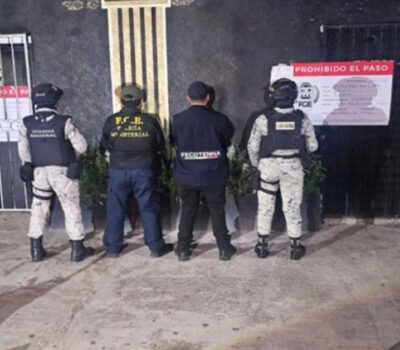Faced with the highest inflation in more than 20 years, the Bank of Mexico continues to raise the interest rate. On Thursday, the central bank’s Governing Council voted unanimously for a hike of 75 basis points, bringing it to 9.25%. This is the highest level since Mexico began its current monetary policy in 2008.
The decision of the bank headed by Victoria Rodríguez Ceja follows that of the Federal Reserve in the United States, which also raised its rate by 75 basis points this month. Banxico, as the Bank of Mexico is known, has raised the rate 11 times since June of last year, when inflation began to rise worldwide as a result of capital injections that developed countries implemented in their economies to prevent them from plunging into recession during the pandemic. The inflation picture worsened at the beginning of the year when Russia launched its military offensive in Ukraine, sending energy prices soaring and raising concerns of a global economic recession.
“Global inflation continued to rise in an environment where imbalances between demand and supply persist in various markets and food and energy prices are still high,” says the statement issued by the Bank of Mexico on Thursday. “This continues to generate expectations of an accelerated global monetary tightening and of reference rates at high levels for an extended period,” it adds.
Annual inflation reached 8.76% last week, its highest level since 2008, according to the National Institute of Statistics and Geography (Inegi). The rise in prices is well above the central bank’s target range of between 2% and 4%. The central bank’s most powerful tool to contain inflation is the interest rate, which is used as a reference in credit cards, mortgages, and financial instruments. A high rate makes credit more expensive, which can help contain price inflation.
This was also the tenth consecutive time that the central bank upgraded its inflation outlook. In the statement, Banxico reported that it expects the rise in prices to reach its peak in the last quarter of the year before gradually falling. Inflation is not expected to reach its target until 2024. These forecasts are subject to risks, the institution warned, including external pressures from the geopolitical conflict and currency depreciation. On the other hand, it is possible that inflation will fall faster if the intensity of the war in Europe decreases and the measures of the Mexican federal government to reduce the rise in food prices work, says the bank.
“The Governing Board evaluated the magnitude and diversity of the shocks that have affected inflation and its determinants, as well as the evolution of medium- and long-term expectations and the price formation process,” says the bank’s statement. “It also considered the greatest challenges for the conduct of monetary policy in the face of tightening global financial conditions, the environment of heightened uncertainty, the accumulated inflationary pressures of the pandemic and the geopolitical conflict, and the possibility of greater effects on inflation”, the report points out.
Faced with the highest inflation in more than 20 years, the Bank of Mexico continues to raise the interest rate. On Thursday, the central . . .












